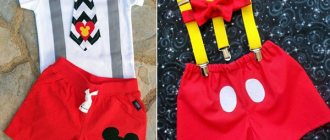Water competitions
1. Use your palms to transfer water from one bucket to a jar, which stands at a distance of 5-8 meters from the bucket. The team with the most water in its jar wins.
2. Each team is given plastic bottles with the bottoms cut off. You need to quickly build a water supply system from them, inserting them one into the other with their necks down. And then pour the water from one bucket to another bucket.
Team wins:
- completed the task faster than others;
- the one with more water in the bucket.
3. Small fish made from scraps of plastic bottles swim in each team’s bucket. They need to be caught with a spoon (one piece at a time) and transferred to another “reservoir” (bucket, basin).
The team that completes the task faster wins.
4. Sets of different glass objects, identical for all teams, are placed on tables or stands. The set may consist of a glass, shot glass, wine glass, goblet, decanter, and so on.
The team captain participates in the competition. He, at the presenter’s signal, begins to pour colored water from a plastic bottle into all these vessels, different in volume. His task is to pour an equal amount of water into all these objects. Then the water from each vessel is poured into identical containers. The winner of the competition is the one who demonstrates greater accuracy.
5. Empty cups are placed on the site (they can be made by cutting off the bottoms of plastic bottles).
The number of cups prepared for one team is the number of people participating in the competition. At the starting line - opposite one set of cups - members of one team line up in a column. The first one clutches a plastic water bottle with his knees. At the presenter’s signal, he opens the bottle and moves to the first cup. Without using his hands, he pours as much water into it as possible. Then he takes the bottle with his hands and runs to the starting line. Passes the bottle to another player and so on. The winner is the team that fills the cups with water the fastest, or the team that pours the most water into the cups. In order to find out, you need to pour water from all the cups filled with one team into a jar and compare it with the same jar filled with another team.
6. 5-10 people per team participate in the relay race. It is necessary to jump from the starting line on one leg, holding a glass of water in your hand, towards a chip or pin. From there you should run to the starting line and pass the glass to the second player, like a relay baton. The team that completes the task faster than others will win.
7. 5-10 people participate in the relay race. The player runs from the starting line to the pin, holding a glass or can of water in one hand and dribbling a basketball with the other hand. Having gone around the pin, he passes both objects to the second player from his team. The team that completes the task faster, or the one with more water left in the jar, wins.
8. 5-10 people participate in the relay race. The first player on the team scoops up water from a bucket with a glass and puts an opaque cylinder made of thick paper on his head. He moves blindly to the stand on which the can stands, pours water into it, removes the cylinder and runs to the starting line. The cylinder and glass are passed to the second player. The team that completes the task faster, or the one that fills its jar more fully, wins. (A team may shout to direct its player to the stand with the can.)
9. 5-10 people participate in the relay race. The first player is given a tennis racket, on which a glass of water is placed. At the leader’s signal, he moves towards the pin, goes around it, returns to the starting line, and passes the racket with a glass to the second player. Do not touch the glass with your hands. It is better to use plastic cups for the relay race. If someone drops a glass, he must return to the bucket, fill up the water again and complete the task accurately. The team that copes with this faster will win.
The team lines up in a line between two large buckets, one of which is filled with water, the second is empty. The players have cans or glasses in their hands. The distance between players is 1.5 meters. It is necessary, by pouring water from jar to jar, along the chain, to drain the full bucket and fill the empty one. Whoever does it faster will win.
Winner's reward ceremony.
Wet feet
We divide the players into two teams. Give each team a bucket of water balloons and an empty bucket.
Players from both teams sit on the floor, forming a line leading from a full bucket to an empty one. You can sit on the bench. To play the game, you need to transfer the balls from one end of the line to an empty bucket, using only your feet to pass them. The balls that break give the game its name - “wet feet”.
When all the balls in the bucket are gone, the team with the most balls (i.e., who has the least number of them burst along the way) wins.
Water games at summer camp
6
Water games
Ball over the line
Objectives: consolidation of swimming techniques using previously studied methods; nurturing speed of movement, strength endurance, agility, coordination in competitive conditions.
Equipment: ball, rope with floats.
Place: a pool in which ropes with floats are stretched between four poles, forming a rectangle of 8x16 or 10x20 m.
Content
Teams are located opposite each other on opposite sides of the pool.
At the signal, the teacher throws the ball into the middle of the field, the players quickly swim towards it, trying to take possession of the ball and throw it over the opponent’s line.
The game lasts up to 5 minutes.
Rules
The team that throws the ball over the opponent's line the most times wins.
Ball in a circle
Objectives: strengthening the skill of passing the ball in the water; improving dexterity, precision of movements, speed of reaction; fostering a sense of collectivism in competitive conditions.
Equipment: ball.
Location: shallow part of the pool.
Content
The teams stand in a circle and throw the ball to each other, trying not to drop it.
Game options:
1) the transfer is performed with one or two hands;
2) the top pass is performed as in volleyball;
3) the same passes, but they are performed by one of the partners sitting on the shoulders of the other.
Rules
The player who drops the ball must be eliminated from the game or change places with his partner.
The game lasts until the specified time, then the mistakes made by the team players are counted and the winning team is determined.
Leapfrog
Objectives: strengthening diving technique; nurturing dexterity, precision of movements, collective interactions in a gaming environment.
Inventory: not required.
Location: swimming pool.
Content
Team members stand at the back of each other's heads.
At the signal, the player standing last jumps over the partner standing in front, dives under the next one, swimming between his legs, and stands in front of him; then the player next to last does the same, etc.
Rules
The team that completes the task first wins.
Pump
Objectives: practicing coordination of inhalation and exhalation on water, breathing rhythm in an aquatic environment; strengthening the skill of exhaling into water in a gaming environment.
Inventory: not required.
Location: swimming pool.
Content
Members of different teams stand in pairs along the side facing each other, holding hands.
Taking turns squatting, plunging your head under the water or lowering your face into the water, the participants exhale into the water the specified number of times.
Rules
As soon as one participant finishes exhaling and emerges from the water, the other must sit down and disappear under the water.
Each participant practices exhalation and inhalation continuously, turning their head to the side as they inhale.
The winner is the one who exhales and inhales more rhythmically, without holding his breath.
The team with the most participants completing the task correctly wins.
Chasing the ball
Objectives: consolidation of swimming techniques using previously learned methods; developing strength, speed, and agility in a gaming environment.
Equipment: balls.
Location: swimming pool.
Content
Teams line up in the water along the side.
The first numbers take the ball in their hands; at the first signal from the teacher, each player throws his ball so that it falls into the water as far as possible (opposite the opponent).
The competitors then swim towards the ball thrown by their opponent.
Having reached the balls, they return them to the columns, after which the second numbers continue the game.
Rules
In case of violation of the rules (throwing the ball outside the pool, as well as the designated corridor), the teams are fined 10 seconds.
The team that completes the relay first wins.
Jumping preparatory
swimming exercises
Objectives: mastering the skill of diving into water with your feet (in various ways); education of courage; development of movement accuracy in competitive conditions.
Inventory: not required.
Location: swimming pool.
Content
Participants perform jumps from the side upside down in the middle and deep part of the pool, one from each team:
1) moving one leg forward, attaching the other to it, jump into the water;
2) from the provisions of Fr. With. with a push of both legs, jump up as high as possible;
3) from a semi-squat position, with a push of both legs, jump into the water as far as possible from the side;
4) from the provisions of Fr. With. with a push of both legs, jump up, group your legs;
5) the same, but after the push, perform a tuck and straighten your legs.
Rules
The winner is the player who managed to correctly complete all the proposed tasks.
Team victory is determined by the sum of victories of the participants.
Fishermen and fish
Objectives: strengthening diving technique; nurturing courage, dexterity, and throwing accuracy in game conditions.
Equipment: football camera.
Location: swimming pool.
Content
The players are divided into “fishermen” and “fish”.
“Fishermen” form a circle, “fish” - inside the circle.
The “fishermen” use a football camera to try to hit the “fish”, who, by diving, dodge it.
Game option: “fishermen” are positioned along the path, and “fish” try to swim the specified distance, diving while moving forward when a ball is thrown at them.
Rules
The team with the most hits wins, and if the number is the same, the winner is the team that hit the players first within the specified time.
Fight on the water
Objectives: strengthening the technique of passing and catching the ball on the water; nurturing accuracy, dexterity, and speed of reaction in competitive conditions.
Equipment: ball.
Location: swimming pool.
Content
The players are divided into two equal teams and randomly placed on the playing field.
When the whistle blows, the teacher throws the ball into the water.
The players who have taken possession of the ball throw it to each other, trying to hit the opponent with the ball in a convenient place (case).
Players of the other team, dodging the ball, try to intercept it.
Rules
For each hit, the team receives one point.
Players of the other team cannot be detained.
The ball can be lifted out of the water with only one hand. Players should not dive when dodging the ball.
For violating the rules, one point is deducted from the team.
The team with the most points wins.
Obstacle course
We create an obstacle course with many water-filled balls along the way. Remember how many balls you put in; the same number of balls must be laid out before each player starts.
One at a time, each player goes through the obstacles, breaking the balls as much as possible (popping them in their hands, over their heads, sitting on them, whatever). We track how long it takes each player to reach the finish line. If a player misses a ball on the way, add one second to his time for each missed ball.
The player with the best time after all starts is the winner.
Volleyball with capitoshki
You will need a court and a volleyball net. Divide the children into two teams and ask them to stand on opposite sides of the grid. Give each team a large beach towel or sheet (depending on team size).
The serving team fills the towel with water bombs (you can agree in advance how many balloons to put on the towel). Then each player grabs a towel and all at once they must launch water balloons through the net.
The team on the other side uses their towel to catch as many capitoshkas as possible and launch them back. Volleyball continues until all the water balloons are gone. Then the other team places capitoshkas on a towel and launches them at their opponents.
The referee can count the bombs that have broken on each side. Whoever breaks the fewest bombs wins.
Musical water bombs
We set up a row of chairs in the same way as for a regular game of musical chairs. Place a water balloon on the seat of each chair. We turn on fun music for the party. While the music is playing, the children run around the chairs. When the music stops, they have to grab a seat. The one who remains standing is eliminated.
This game is exactly the same as traditional musical chairs, except the caps pop when kids quickly sit on them, adding to the fun of getting wet in the summer heat. Replace broken water balloons and remove another chair after each round.
Wet pants
To play this game, you'll need a pair of neutral-sized, one-size-fits-all pants that kids can wear over their swimsuits. Better something wide, with an elastic band. However, shorts will not work; long trouser legs are needed.
One at a time, the children get into their pants, and the rest of the players fill their pants with water bombs. A player wearing pants filled with balls runs to the finish line, trying not to burst the balls that are inside the pants. The one who can carry the most balls wins. But the main thing here is not the victory, but the process itself: a very funny and fun game!
Toybytoy.com, spring 2016
.
Save the balls
Divide the players into two teams. Place them a couple of meters apart, each team with an empty large container for the caught balls and a bucket filled with water balls.
Players throw water balloons at the opposing team. When they launch balls at an opponent, they must also try to catch the balls thrown at them to prevent them from breaking. Players place the caught balls in an empty tray. When both teams have run out of caps, we count how many marbles each team caught. The team with the most water balloons wins.
Who will spill the least amount of water?
Several teams of five people play. At the beginning, each team is given a children's bucket of water. The buckets must be the same, otherwise there will be difficulties in determining the winner. Flags are placed in front of each team at a distance of approximately fifteen meters. It is convenient to play on a flat surface. At the judge’s signal, the first participant begins to run with the bucket to the flag, runs around it and returns to the team, passing the baton to the next participant. Victory can be awarded to the fastest team or the one that spills the least amount of water in five races. Instead of buckets, you can use plastic cups or any other light containers.
And today let's talk about what kinds of water games there are for children. After all, it’s summer now, and this is an opportunity to spend a lot of time near the pond.









